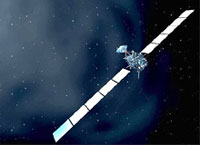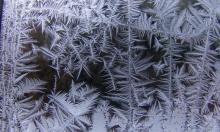Mysterious alien guest visits Earth’s orbit
Last Thursday three observatories in the US spotted an unidentified object, designated 2007 VN84, heading Earth's way. This prompted the Minor Planet Center at the Harvard Smithsonian Center for Astrophysics in Cambridge, Massachusetts, US, which co-ordinates the search of near-Earth objects, to issue a potential near-miss warning.

The warning was later retracted after Moscow-based astronomer Denis Denisenko noticed that the object's trajectory closely matched Rosetta's.
The mix-up generated a few red faces, but also points to some important lessons. "The system is there to try to accurately assess an object," says Mark Bailey, director of the Armagh Observatory in Northern Ireland.
It is designed to spot objects moving towards Earth, determine their trajectory, and to disseminate necessary information as quickly as possible so that others can make measurements.
"If it's going to hit, you need to work out when and where as quickly as possible. You don't want them sitting on the data wondering whether it's an asteroid or not," Bailey told New Scientist.
But the incident raises questions about how well the warning system works. The Minor Planet Center complains that, "this incident highlights the deplorable state of availability of positional information on distant artificial objects". This lack of a centralised database makes checking incoming objects against known space probes difficult.
Bailey says that, while a good idea, it is unclear who should compile, maintain, and pay for such a database. "That's a very tricky question," he adds.
Others argue that the Rosetta approach has proven the robustness of the system. "It shows that the telescopes are picking these objects up," says Robert Massey, a spokesperson for the Royal Astronomical Society in the UK. "For them it's just a moving point of light that is not easy to identify as a spacecraft."
He concedes that a lack of coordination may have contributed to the error, but believes the fly-by has been a good test of the alerting system. "The alert was not particularly alarmist, the spacecraft was identified, and no major announcement was made," he says.
Bailey agrees. "We can live with red faces once in a while," he says.
Space junk from Apollo moon missions has been mistaken for an asteroid before, said Peter Brown, a meteor expert at the University of Western Ontario.
"This is the first time that by accident a spacecraft with a well-determined orbit has been picked up" by computer programs that constantly scan for unexplained moving objects, he said.
It shows how hard it is to make an instant judgment about what is or isn't a killer asteroid, based on a single point of light, canada.com reports.
But also shows the search programs don't miss anything: "Far be it from any alien race to want to put any spacecraft in orbit. The current search programs are pretty good at getting these things."
Sources: agencies
Subscribe to Pravda.Ru Telegram channel, Facebook, RSS!




